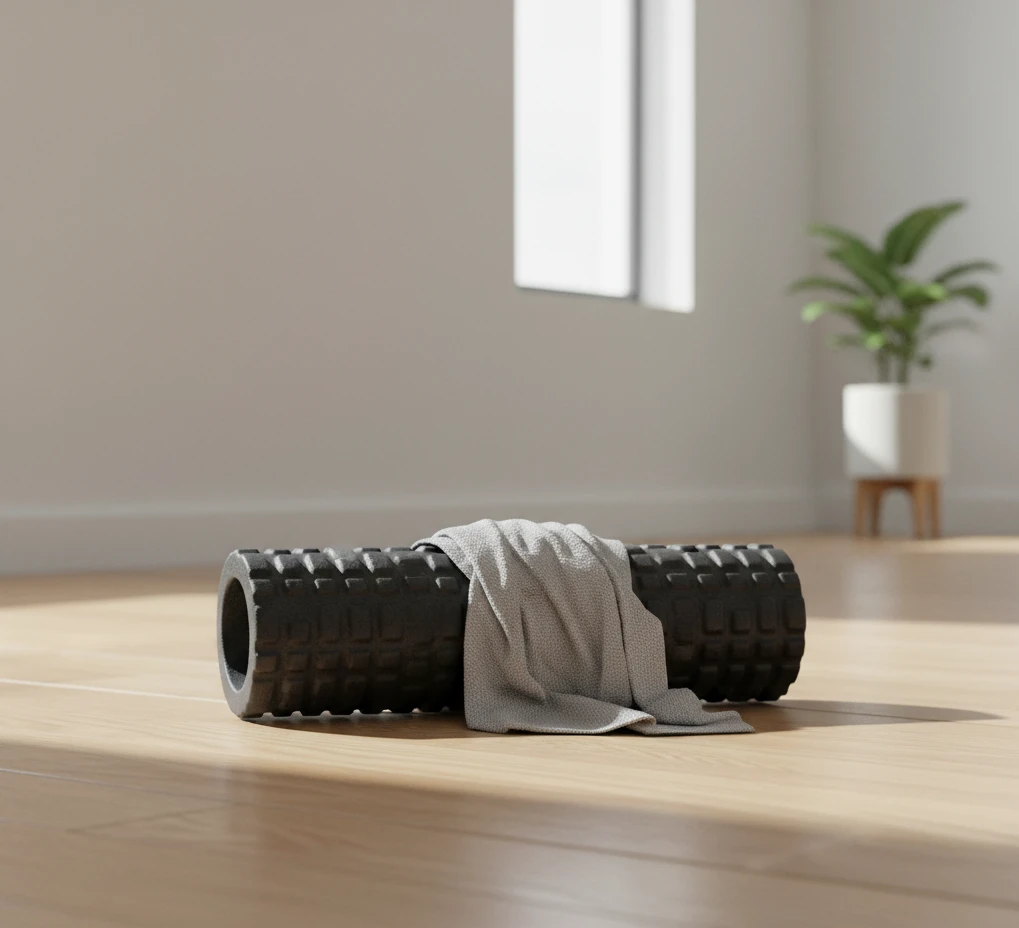Foam Rolling: Friend or Fad?

If your gym floor looks like a pool noodle factory, you're not alone. But is foam rolling a must or just trendy fluff?
The Myth: Foam Rolling Breaks Up Scar Tissue and Dramatically Improves Performance
Foam rolling has become a pre- and post-training staple. Marketers claim it "breaks up adhesions" and enhances performance. Science paints a more nuanced picture.
A comprehensive meta-analysis looked at 21 studies measuring performance and recovery outcomes with foam rolling (PubMed31024339). The results reveal what foam rolling can and cannot do.
What the Research Actually Shows
Sprint Performance
Pre-rolling produced minor improvements (~0.7%), but effects were inconsistent. Post-rolling slightly attenuated declines in sprint performance after fatigue (PubMed31024339). The practical significance of these small changes is questionable for most athletes.
Flexibility and Range of Motion
Range of motion improved modestly (~4%) after foam rolling (PubMed31024339). This effect seems due to neural modulation rather than structural changes. In other words, your muscles aren't actually lengthening - your nervous system is just tolerating more stretch.
Strength and Power
No significant benefits. Foam rolling doesn't make you jump higher or lift more weight. If you're looking for performance gains in these areas, invest your time in actual strength training.
Delayed-Onset Muscle Soreness (DOMS)
Post-rolling reduced perceived soreness moderately (effect size 0.47), making it useful for comfort (PubMed31024339). This is perhaps the most consistent and meaningful benefit of foam rolling.
| Outcome | Effect Size | Practical Significance |
|---|---|---|
| Sprint performance | Small (~0.7%) | Minimal, inconsistent |
| Flexibility/ROM | Modest (~4%) | Useful for mobility work |
| Strength | None | No benefit |
| Power/Jump height | None | No benefit |
| DOMS relief | Moderate (ES 0.47) | Helpful for comfort |
Debunking the "Breaking Up Adhesions" Claim
There's no evidence that foam rolling physically breaks collagen adhesions. The forces applied during foam rolling are insufficient to mechanically disrupt scar tissue or fascial restrictions. Instead, benefits likely stem from neurophysiological responses - increased stretch tolerance and altered pain perception.
The Science: Foam rolling works through neuromodulation, not tissue breakdown. It temporarily relaxes the nervous system's protective responses, allowing greater range of motion and reduced pain perception. Think of it as a self-massage that changes how your brain interprets signals from your muscles, not as a tool that physically remodels tissue.
Best Practices for Foam Rolling
Duration
30-60 seconds per muscle group seems sufficient. Longer sessions don't produce extra benefits and may cause discomfort. Multiple short bouts throughout the day can work well if you're particularly sore.
Pressure
Moderate pressure works well. Excessive force can bruise tissue without improving outcomes. You should feel pressure and mild discomfort, not acute pain. The "no pain, no gain" mentality doesn't apply here.
Timing
Use foam rolling in these contexts:
- Post-training: For soreness relief and perceived recovery. This is where foam rolling shines.
- Pre-training: To prime range of motion before dynamic stretching. Keep it brief (30-60 seconds per area).
- Off days: As part of active recovery when you're feeling tight or stiff.
- Before static stretching: May help you achieve greater stretch depth more comfortably.
Technique Tips
- Roll slowly over the muscle belly, pausing on tender spots for 10-20 seconds
- Avoid rolling directly over joints, bones, or acute injuries
- Breathe deeply and try to relax the muscle being rolled
- Combine with dynamic stretching for best pre-workout preparation
- Focus on commonly tight areas: calves, quads, IT band, glutes, lats, thoracic spine
Who Benefits Most from Foam Rolling?
- Athletes with limited mobility: The modest ROM improvements can help achieve better positions in training
- Those experiencing DOMS: The soreness reduction is real and can improve training quality
- Desk workers: Brief rolling sessions can provide relief from postural tension
- Anyone who enjoys it: If it feels good and helps you move better, that's valuable even if the mechanisms aren't what you thought
What Foam Rolling Won't Do
- Break up scar tissue or fascial adhesions
- Significantly improve strength or power output
- Replace proper warm-ups or strength training
- Provide major performance enhancements
- Fix movement pattern dysfunction or compensations
Bottom Line: Foam rolling is a useful tool for managing soreness and temporarily improving range of motion, but it's not a performance game-changer. Use it as part of a comprehensive approach to recovery and mobility, not as your primary strategy. The benefits are real but modest - think of foam rolling as a complement to, not a replacement for, proper training, recovery, and movement practice.